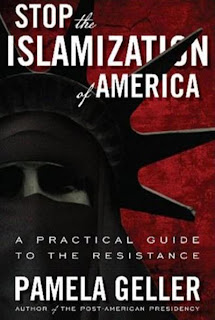There are currently pending (or soon to be pending) before the CAFC, nine (9) appeals from TTAB decisions in opposition proceedings. The cases are summarized below, with links to the pertinent TTABvue pages where the decisions may be found, as well as to the pertinent
TTABlog postings, if any. [Appeal briefs and other papers may be found via
PACER; Oral argument recordings may be found
here, if any].
Oppositions:
Stone Lion Capital Partners v. Lion Capital LLP, Appeal No. 13-1353 (Opposition No. 91191681, January 18, 2013). [The Board sustained this opposition to registration of
STONE LION CAPITAL for "financial services, namely, investment advisory services, management of investment funds, and fund investment services" [CAPITAL disclaimed], finding the mark likely to cause confusion with the registered marks
LION and
LION CAPITAL for various financial services [CAPITAL disclaimed]].
StonCor Group, Inc. v. Specialty Coatings, Inc., Appeal No. 13-1448 (Opposition No. 91187787, June 22, 2012). [The Board dismissed this opposition to
ARMORSTONE for "clear and pigmented coatings used in the nature of paint; Glazes; House paint; Interior paint; Mixed paints; Paint for concrete floors; Paint primers; Paint sealers; Paint thinner; Paints; Paints and lacquers; Pavement striping paint; Epoxy coating for use on concrete industrial floors," finding it not likely to cause confusion with the registered mark
STONCLAD,
STONHARD, and
STONSHIELD for goods that include epoxy hardeners; and also finding the applied-for mark not merely descriptive of applicant's epoxy coatings].

Costantine v. C.F.M. Distributing Company, Appeal No. 13-1467 (Opposition No. 91185766, March 20, 2013). [In this complicated case concerning ownership of the two marks shown immediately below, for restaurant services, the Board sustained Opposer Constantine's oppositions, ruling that applicant was not the owner of the marks at the time the applications were filed, and consequently, both of the opposed applications were void ab initio]. [TTABlogged here]. [Affirmed
per curiam].
Cutino v. Nightlife Media, Inc., Appeal No. 13-1541 (Opposition No. 91186025, April 25, 2013). [Dismissal of a Section 2(d) opposition to registration of
NIGHTLIFE TELEVISION for "Video-on-demand transmission services, Internet broadcasting services, broadcasting services, namely, broadcasting programs over a global computer network to mobile telephones and computers, Satellite television broadcasting, and Television broadcasting," in view of the registered marks
LONG ISLAND’S NIGHTLIFE (Stylized) [LONG ISLAND disclaimed] and
NEW YORK'S NIGHTLIFE [NEW YORK'S disclaimed] for monthly magazines].
Implant Direct Int'l v. Clear Choice Holdings LLC, Appeal No. 14-1071 (Opposition No. 91190485, August 26, 2013) [The Board sustained this Section 2(d) opposition to registration of the mark
REAL CHOICE, finding confusion likely with the registered mark
CLEARCHOICE DENTAL IMPLANTS, both for dental implant services [DENTAL IMPLANTS disclaimed in the registered mark]. [
TTABlogged here].
Cybervillage Corporation v. New Jersey Nets LLC, Appeal No. _______ (Opposition No. 91201370, September 9, 2013) [The Board sustained this opposition on two grounds: non-use of the applied-for service mark
WWW.BROOKLYN-NETS.TV for "Promoting the goods and services of others, namely, the Dr. Cassagnol signature-lines of fine arts and higher technologies products and services thru the Dr. Cassagnol publishing house, studios and museum group by means of online and offline ordering and cataloging of those goods and services in fine arts and high technologies, distributing advertising materials through a variety of online and offline marketing methods and promotional contests of the Dr. Cassagnol publishing house, studios and museum groups, and by arranging for sponsors to affiliate their goods and services with the Dr. Cassagnol publishing house, studios and museum group’s activities through the Dr. Cassagnol organizational global high-tech network of the Dr. Cassagnol publishing house, studios and museum group’s duly registered web addresses," in International Class 35, and likelihood of confusion with opposer's famous, registered
NETS and
NEW JERSEY NETS marks for,
inter alia, on-line store, ordering, retail, electronic retailing, catalog, and mail order catalog services].
M.Z. Berger & Co. v. Swatch AG, Appeal No. 14-1219 and 14-1220 (Opposition No. 91187092, September 30, 2013) [precedential] [The Board sustained this opposition to registration of the mark IWATCH, in standard character form, for watches, clocks, and parts thereof, finding that applicant lacked the requisite bona fide intent to use the mark in commerce in connection with its identified goods. However, the Board dismissed Swatch's likelihood of confusion claim, from which dismissal Swatch has cross-appealed]. [
TTABlogged here].
Amorepacific Corporation v. Primavera Life GmbH, Appeal No. 14-1255 (Opposition No. 91196106, September 11, 2013) [The Board sustained this opposition to registration of
PRIMERA for "Cosmetics and cosmetic preparations; nonmedicated nourishing creams for skin; skin milk lotions; facial creams; cosmetic creams; toilet waters; make-up preparations; non-medicated skin care preparations; foundation cream; shampoos; beauty masks; make-up powder," finding the mark likely to cause confusion with the registered mark
PRIMAVERA for,
inter alia, pefumery and cosmetics].
Franciscan Vineyards, Inc. v. Domaines Pinnacle, Inc., Appeal No. 14-1269 (Opposition No. 91178682) [The Board dismissed this Section 2(d) opposition to registration of the mark
DOMAINE PINNACLE & Design for "apple juices and apple-based non-alcoholic beverages" [DOMAINE disclaimed], finding it not likely to cause confusion with the PINNACLES and PINNACLE RANCHES for wine [RANCHES disclaimed]. [
TTABlogged here].
Read comments and post your comment here.
TTABlog note: See any WHYA?s here?
Text Copyright John L. Welch 2013.












































